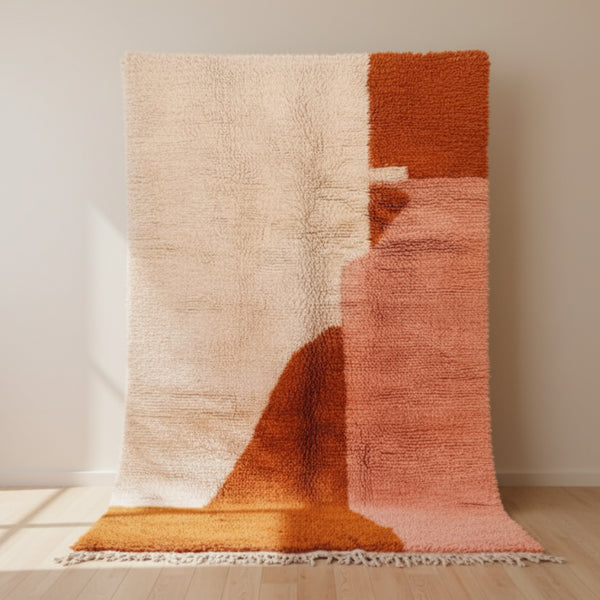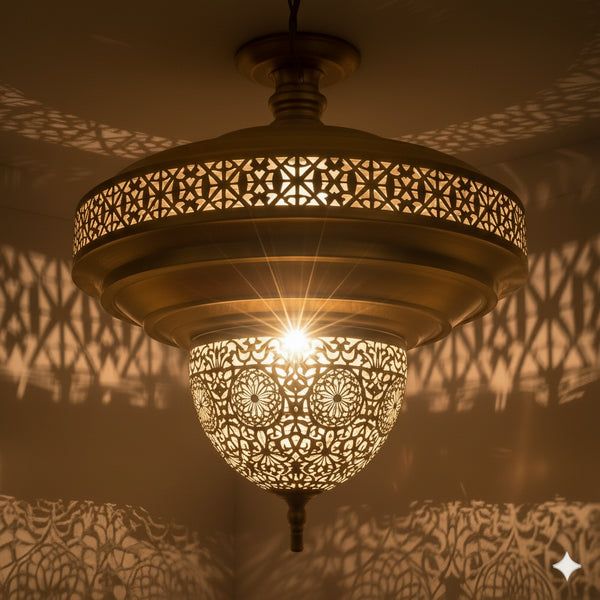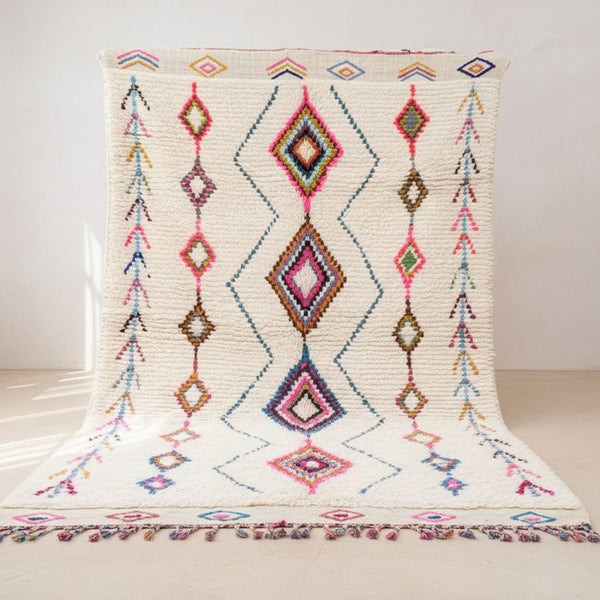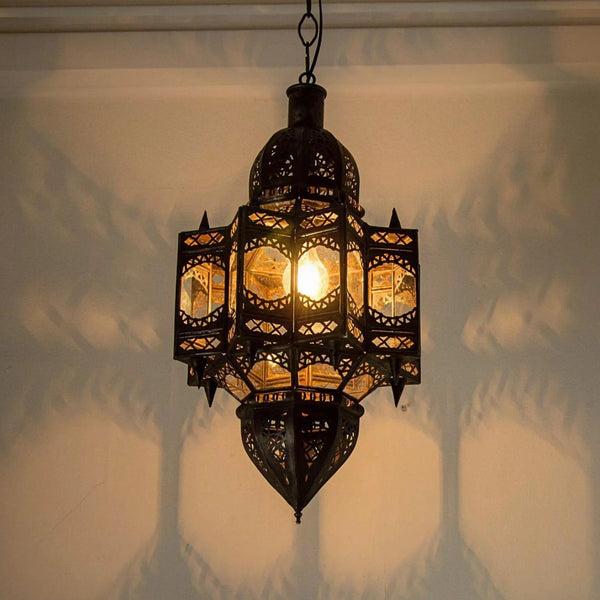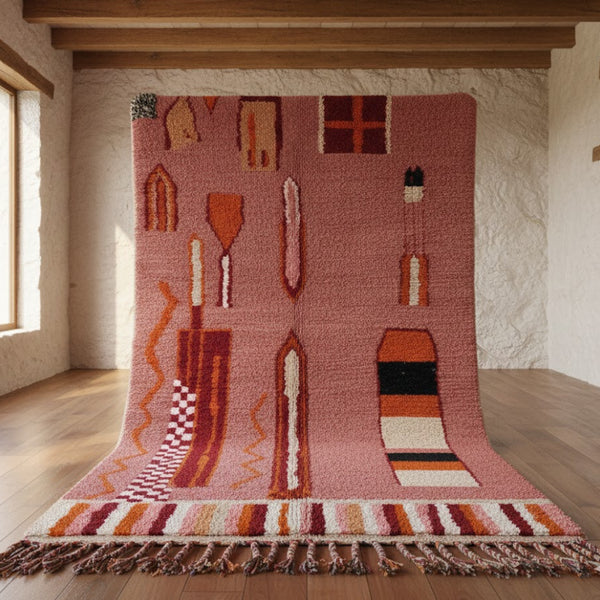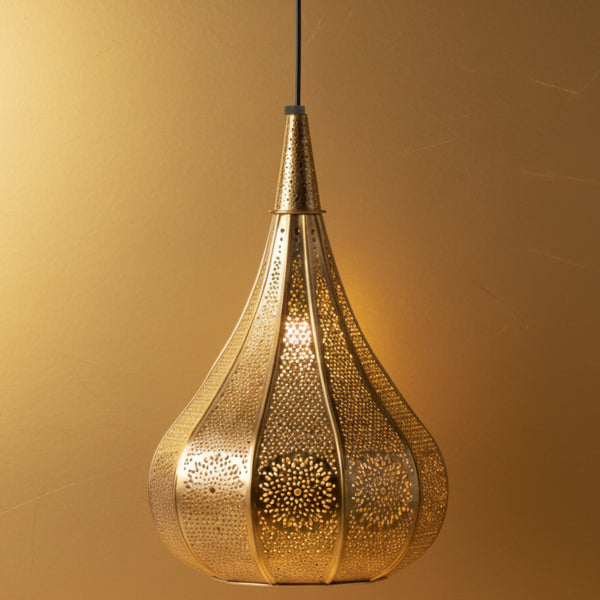Why Brass Moroccan Lamps Are Trending in 2025 Interiors
Posted by AADIL KHAN
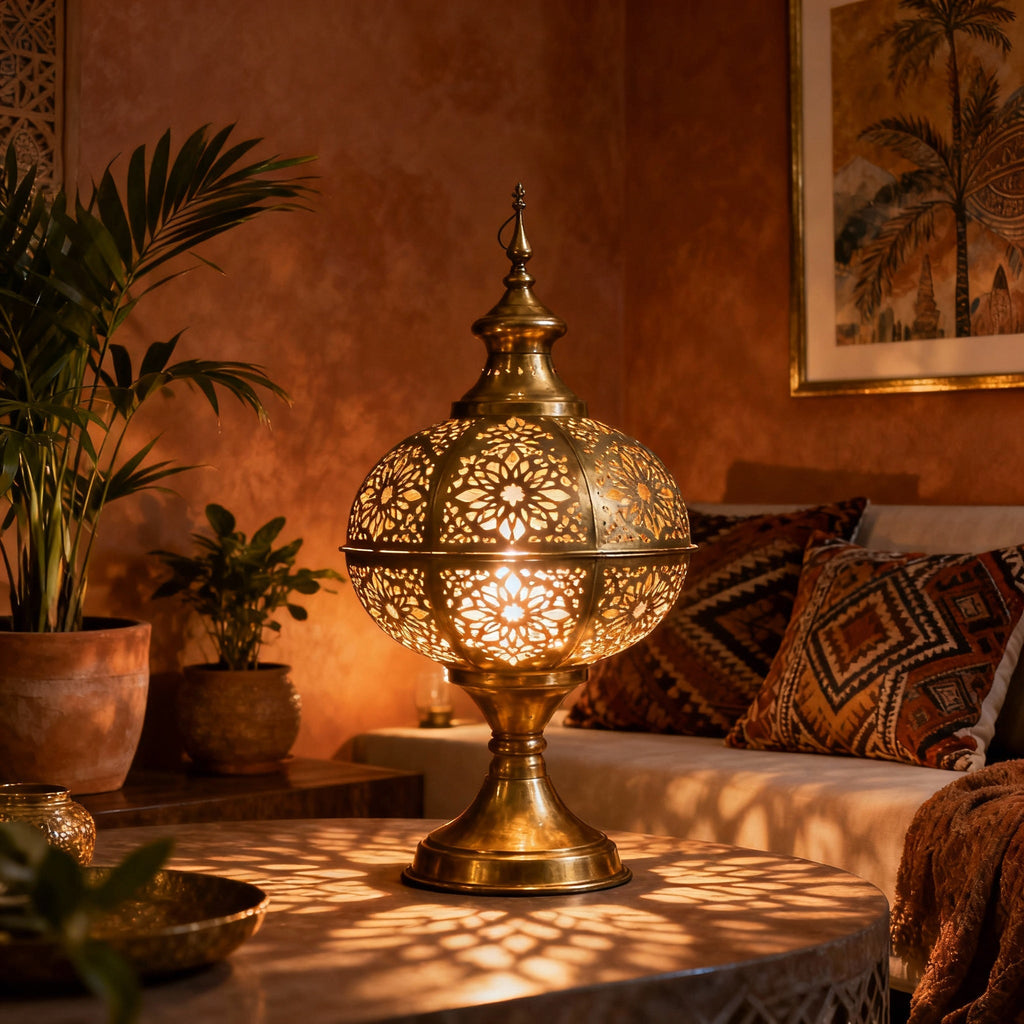
In 2025, if you walk into a home that is ahead of the curve in design, you will probably see a striking brass fixture casting intricate shadow patterns on the walls. This is a sign of how Moroccan lighting has made a huge comeback in modern homes. For years, simple pendant globes and industrial Edison bulbs were the only types of lighting that mattered. Now, homeowners who care about design are looking for fixtures that have character, a story, and sculptural beauty. Brass Moroccan lamps have become the perfect way to meet this shared need for spaces that feel warm, curated, and deeply personal instead of catalog-perfect. This isn't just a passing trend; it's a real change toward valuing the work of artisans, cultural heritage, and the kind of timeless beauty that gets better with age. As we move through the design world of 2025, these bright treasures are a perfect example of how sustainability, art, and the deep human need for beauty that goes beyond fashion can all come together.
The Timeless Beauty of Brass Moroccan Lamps

Brass Moroccan lamps are still popular because they can be both functional lighting and sculptural art at the same time. This is a unique quality that few other decorative items can match. These hand-pierced fixtures have beautiful geometric patterns that are based on hundreds of years of Islamic art. They cast beautiful light patterns that turn ordinary rooms into peaceful sanctuaries. Brass has a warm, honeyed glow that goes with almost any color scheme, from cool grays and whites to rich jewel tones and earthy terracottas. This makes these pieces very flexible, even though they are very unique.
The difference between real brass Moroccan lamps and cheap knockoffs is that you can see the work that went into making them in every detail. Each piece has small flaws that show that it was made by hand, like small changes in the patterns of the holes, the natural patina that forms over time, and the heavy weight of solid metalwork. In a time when people are getting tired of designs made by computers and cheap decorations, this authenticity really stands out. The fixtures get better with age because natural oxidation gives them character and makes them look better instead of worse.
These lamps are well-made enough that they can be the center of attention without being too much, striking the right balance between being a statement piece and a part of the room. Brass Moroccan lamps draw attention to themselves while still looking classy and understated. They can hang in groups over a kitchen island or stand alone in an entryway. The holes in their surfaces make them interesting to look at because they play with solid and void, light and shadow, tradition and modernity. This complexity makes them worth looking at for a long time and never feels flat or one-dimensional.
2025 Design Trends That Value Traditional Craftsmanship
The rise of brass Moroccan lamps fits perfectly with several design trends that will define interiors in 2025. One of these trends is the widespread acceptance of handmade goods as a way to counteract the homogenizing effects of mass production. People today care more and more about things with a history—things that were made by skilled hands using traditional methods and passed down through generations instead of factory assembly lines. This change is more than just a matter of taste; it shows how our values about consumption, authenticity, and the duty we have to support living craft traditions are changing.
The slow design movement that is gaining ground in 2025 encourages people to buy fewer, better pieces that will last for decades instead of just a few seasons. Brass Moroccan lamps are a great example of this style because they are built to last and look good no matter what the latest trend is. These traditional styles have stood the test of time, unlike trendy fixtures that feel old after a few years. This makes them truly sustainable choices in every sense of the word.
People in 2025 value cultural appreciation as a design principle. They want real pieces that honor their origins instead of fake ones. Homeowners can add global touches to their homes while supporting traditional craftspeople by buying real brass Moroccan lamps from trusted sources that work directly with artisan cooperatives. This thoughtful approach to cultural elements in design shows that our sense of style is growing up and that we value depth and meaning over just being different.
We don't want sterile, overly curated "Instagram-perfect" spaces anymore, which has made room for personality and story in our homes. Brass Moroccan lamps are perfect for this kind of storytelling because they are conversation starters that show how much the person who lives there values craftsmanship, travel, or artistic heritage. They change the look of rooms from generic showrooms to spaces that feel like they were put together over time and really lived in.
How Moroccan ceiling lights change the look of modern rooms

What makes Moroccan ceiling lights so special is that they can be both a source of light and a kinetic art installation. They change the way we see space by casting shadows that move throughout the day. These lights on the ceiling make intricate geometric patterns on the walls and ceilings, turning static rooms into living spaces. The shadow projections make spaces feel dynamic and interesting by changing the way they look as natural light changes or the fixtures are lit at different times.
Moroccan ceiling lights are very important in modern open-concept layouts that can sometimes feel empty or undefined. They help define different functional areas without the need for physical barriers. A big brass light fixture over the dining area makes it feel separate from the living areas next to it, but it still keeps the open flow that modern floor plans need. These fixtures also create intimate spaces within larger rooms by focusing light dramatically downward. This is a problem that modern architecture has been trying to solve for a long time.
Moroccan ceiling lights have a sculptural quality that adds warmth to the clean lines and simple styles that are popular in modern architecture. These intricately detailed fixtures add beauty and texture to modern spaces, making them feel more like home. They are the perfect counterbalance to smooth surfaces like concrete, glass, and polished stone, which are common in 2025 design and benefit from the organic complexity of traditional metalwork.
Moroccan ceiling lights are great for ambient lighting instead of harsh direct light, which is part of the layered lighting style that will be popular in 2025. The holes in the patterns spread light out beautifully, getting rid of glare and giving enough light overall. Ceiling-mounted Moroccan lights are great for bedrooms, living rooms, and dining rooms where mood lighting is more important than task-oriented brightness.
How Moroccan pendant lights can be used in modern design

In 2025 kitchens, Moroccan pendant lights are very popular. The trend of using more than one light fixture over an island lets you make a big statement without making the space feel too crowded. Putting up three matching pendants in different sizes or the same pieces at different heights adds visual rhythm and gives you task lighting for cooking. The warm brass tones balance out the cool tones of stainless steel appliances and stone countertops, which are common in modern kitchens. This is important because these are hard-working spaces.
Moroccan pendant lights look their best in dining rooms, where they hang low enough to create cozy lighting zones that make meals feel special and keep glare out of diners' sight lines. The decorative shadows these lights cast make gatherings more interesting and give people something to talk about, which makes dining areas more social. The cords can be adjusted to fit different table sizes and ceiling heights, making these fixtures work in a variety of architectural settings.
Entryway installations use the immediate effect of Moroccan pendant lights to give a home its character from the start. A big brass fixture in the foyer makes a clear style statement that sets the tone for the rest of the house and provides welcoming light. In entryways, pendant lights with a vertical focus also draw the eye upward, making areas with standard ceiling heights feel bigger and more architecturally important.
Moroccan pendant lights show their softer side in the bedroom, especially when used as bedside lamps on either side of the headboard or as a central statement piece instead of a regular ceiling fan or flush mount. The soft, filtered light sets the mood for relaxation, and the handcrafted details make these private retreats feel more luxurious and unique. Lower-wattage bulbs in perforated brass make ceilings look like star fields, which turn bedrooms into peaceful places to think.
What Makes Brass the Best Metal in 2025
The rise of brass over other metal finishes in 2025 is part of a larger trend toward warmer, richer colors that feel more natural. Brushed nickel and chrome were the most popular finishes in the past because they were cool and neutral. Now, brass adds warm golden tones that go well with popular colors like terracotta, sage green, warm oak, and creamy whites that are replacing stark whites in modern palettes. This warm metal connects different types of materials, bringing together stone, wood, textile, and glass elements that might not seem to go together otherwise.
People in 2025 like materials that change and improve over time instead of staying perfectly the same. This is why they like brass. Age and use create a natural patina that gives each piece its own unique character that mass-produced finishes can't match. This change is in line with the general trend away from pristine, untouchable interiors in favor of homes that welcome use, age, and the beautiful flaws that come with real living.
Brass is much better for the environment than finishes that need chemical treatments, coatings, or processes that make toxic byproducts. Consumers are becoming more interested in circular economy principles, and solid brass fixtures can be refinished, fixed, and eventually recycled when they are no longer needed. Brass Moroccan lamps can last for generations if they are taken care of properly. This is in line with the anti-disposable philosophy of responsible consumption in 2025.
The mixed metal trend will still be going strong in 2025, making brass a great choice that goes well with black, copper, and aged metals without making things look messy. Brass Moroccan lamps look great in kitchens with stainless steel appliances, bathrooms with black fixtures, or living rooms with a mix of metals. Brass is a safe but interesting choice for homeowners who aren't sure about more unique metal finishes because it can be used in so many ways.
How to Style Brass Moroccan Lamps in Different Types of Interiors
Brass Moroccan lamps add a lot of decorative interest to modern minimalist spaces. They are the only decorative element that keeps minimalism from feeling too bare or sterile. A single statement fixture becomes the jewelry that makes simple rooms look better, showing the minimalist idea of "less but better." The geometric patterns go well with minimalist styles, and the brass warmth keeps the coldness that can happen in minimal interiors with a lot of white, gray, and concrete.
Brass Moroccan lamps fit right in with bohemian interiors because they are a natural part of their layered, eclectic style. These fixtures go well with the textiles, plants, global accents, and bright colors that are typical of boho style. Several fixtures at different heights give the room a collected-over-time feel that is characteristic of successful bohemian spaces. The brass tones go well with the warm woods, rattan, and natural fibers that are common in this style.
Moroccan pendant lights are perfect for transitional designs that mix traditional and modern styles. They honor classical craftsmanship while keeping things simple and clean. These lights add the decorative touch that traditional design needs without the fussiness of crystal chandeliers or lighting that is too obviously from a certain time period. They look great with both Chesterfield sofas and mid-century credenzas. They are a neutral space where different styles can come together.
Modern traditional interiors use brass Moroccan lamps to add a touch of freshness to classic spaces that might otherwise feel stale. Using Moroccan fixtures instead of expected chandeliers in traditional dining rooms is a modern way to update them while still keeping their formal look. The pieces give a sense of global sophistication that is current and well-traveled instead of old-fashioned or boring. They are perfect for traditional homes that want to stay relevant without losing their architectural style.
The Sustainability Factor That Will Affect Choices in 2025
In 2025, environmental awareness has gone from being a niche issue to a mainstream priority. Consumers are more and more making decisions about what to buy based on how sustainable it is, including how it was made, where the materials came from, how long it will last, and how it will be disposed of at the end of its life. Handmade brass Moroccan lamps are the best in all of these areas because they are truly sustainable luxury that meets both aesthetic and moral needs. Compared to industrial manufacturing, handcrafting uses very little energy. This is because artisans usually work with simple hand tools instead of machines that use a lot of electricity.
When talking about sustainability, the length of time something lasts is very important. For example, brass fixtures can last for fifty years or more, while mass-produced lighting needs to be replaced every five to ten years. This durability means that fewer resources are used over time, less waste is made, and the environmental impact is lower each year of use. Buying high-quality items that last for generations is the most environmentally friendly choice consumers can make. This is much better than choosing slightly greener disposable options.
Buying real brass Moroccan lamps helps artisan communities and the economy by keeping traditional skills alive and paying fair wages. Many brass fixtures come from cooperatives, which make sure that workers are treated fairly and that the community benefits. This makes customers feel good about their purchases because they know they are supporting, not exploiting. This aspect of social sustainability is having more and more of an effect on buying decisions in 2025 as people realize that they can either keep bad supply chains going or break them.
Conclusion: Putting money into Timeless Trend
The brass Moroccan lamp trend that will be big in 2025 is more than just a style choice. It shows that we value our homes and the things we bring into them in a whole new way. These fixtures are a perfect example of how evolved contemporary design brings together beauty, craftsmanship, sustainability, and an appreciation for culture. As investments, they offer the rare combination of immediate aesthetic impact and lasting relevance that transcends trend cycles, making them genuinely smart choices for anyone creating spaces meant to endure and delight for years to come. At this point, all that is being said is what smart designers have always known: real craftsmanship, warm materials, and beauty that means something never go out of style.
